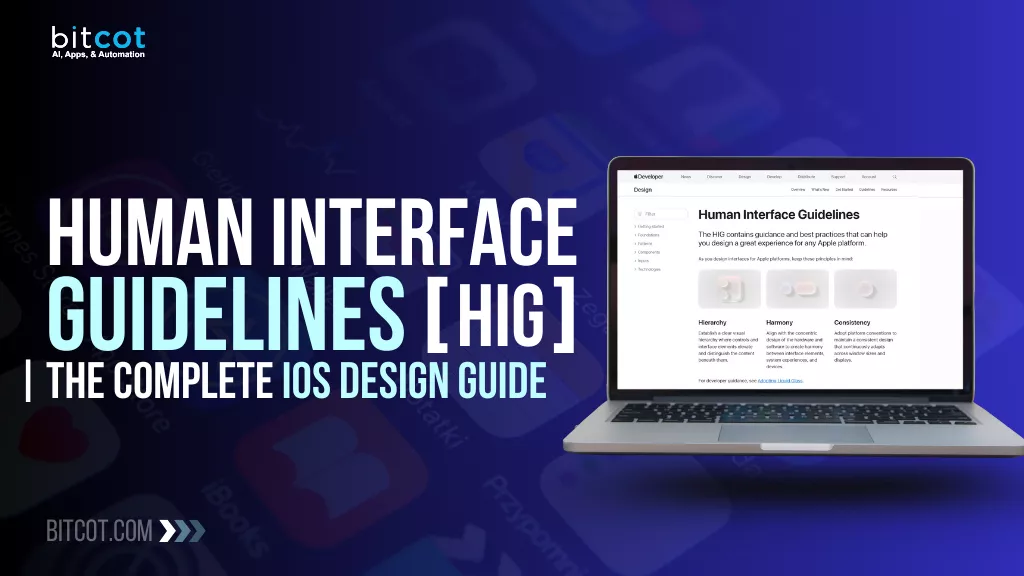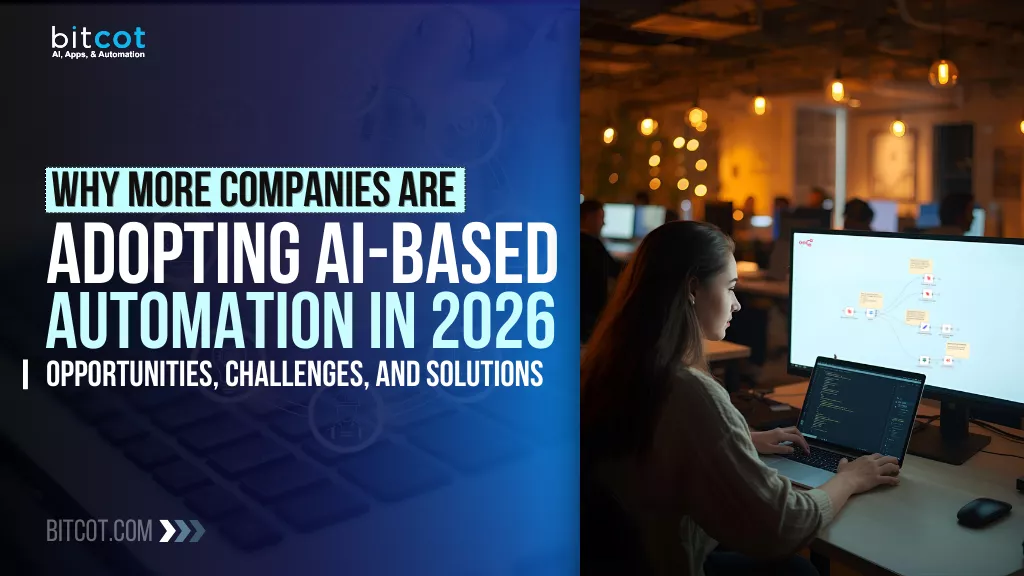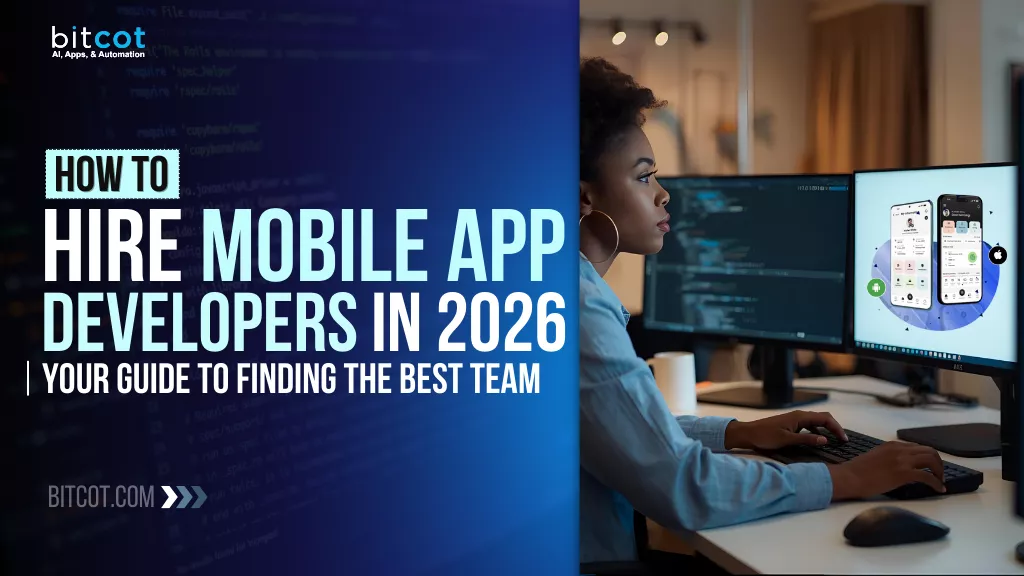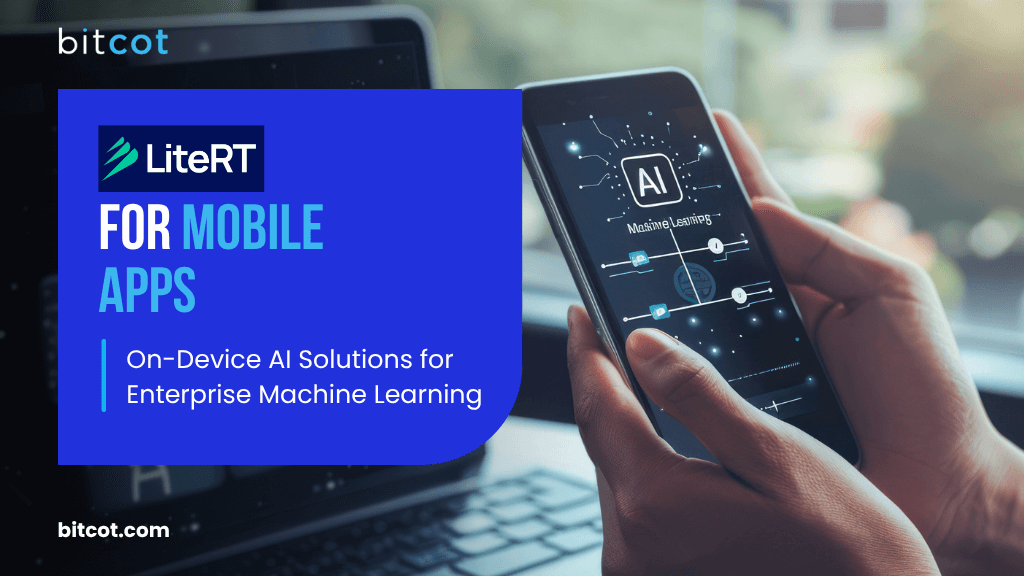
Mobile apps are changing fast with artificial intelligence leading the way. Cloud-based machine learning has helped many companies grow. But now, businesses face big problems: slow speeds, privacy issues, connection problems, and rising costs.
The answer? On-device AI that runs machine learning right on user phones and tablets through edge computing technology and neural network processing.
LiteRT (formerly TensorFlow Lite) is now the top choice for on-device machine learning and mobile ML deployment. It powers over 100,000 apps across 2.7 billion devices worldwide with edge AI capabilities.
This guide shows how LiteRT changes mobile app development and increases your profits. You’ll learn about mobile app development best practices, how to set it up, and real examples from healthcare, finance, retail, and manufacturing sectors.
What is LiteRT? Google’s On-Device Machine Learning Framework Explained
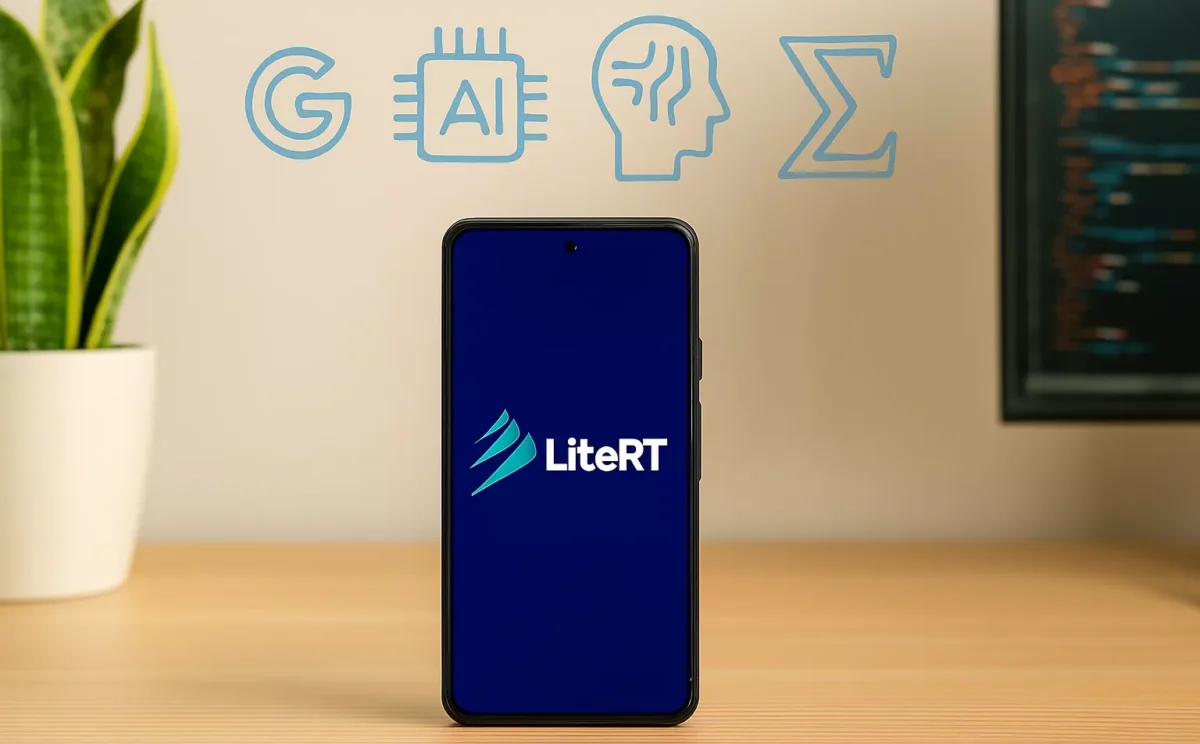
The AI revolution in mobile apps has hit a turning point. Most companies struggle with one big problem: traditional cloud-based machine learning can’t give users the speed, privacy, and reliability they need through serverless architecture.
Meet LiteRT, Google’s powerful ML runtime for on-device machine learning and edge inference. It powers AI on over 2.7 billion devices around the world. It used to be called TensorFlow Lite.
Now it supports models from PyTorch, JAX, and Keras frameworks. This makes it the best choice for running machine learning right on phones and tablets with neural processing capabilities.
For business leaders, CTOs, and tech decision-makers, the question has changed. It’s not about whether to add AI to mobile apps anymore. It’s about how to do it the right way: fast, cheap, and at scale with distributed computing.
LiteRT solves this by offering:
- Instant results with no server delays (low-latency inference)
- Complete privacy by keeping data on the device (data localization)
- No need for internet connection (offline functionality)
- Much lower costs to run (reduced cloud infrastructure)
This guide shows how LiteRT changes business mobile apps through edge AI deployment. You’ll learn what problems it solves, how different industries use it to make money, and the best ways to set it up for success.
Why Cloud-Based AI Creates Mobile App Performance Problems
Your mobile app promised advanced AI features with cloud computing. You spent a lot of money on machine learning infrastructure. But users keep complaining about slow speeds, connection problems, and privacy worries. At the same time, your cloud costs keep going up and more users are leaving your app.
Business leaders in all industries face the same problem. They need to add smart AI features to mobile apps with real-time processing. But they also need to handle speed issues, privacy rules, costs, and what users expect.
Here Are the Real Business Impacts of Cloud-Dependent AI That Hurt Mobile Apps Today:
Performance Degradation and User Experience: Every tiny delay costs you sales. AI features that need to contact servers create network latency delays of 200-500 milliseconds or more. For apps that need instant responses with real-time inference, these delays ruin the user experience. Think about AR shopping, medical diagnostics, or bank transactions. These apps can’t handle delays that make users leave for competitor apps.
Privacy and Compliance Risks: Sending user data to cloud servers creates legal problems with data protection regulations. GDPR, HIPAA, CCPA, and new data protection laws make cloud-based AI risky and complex. One data breach could cost millions in fines. It could also destroy your brand reputation forever.
Uncontrolled Infrastructure Costs: Running millions of AI requests in the cloud doesn’t scale well with distributed computing. Your AWS or Azure bills grow fast as more people use your app. Every successful marketing campaign brings more users. But it also brings higher cloud infrastructure costs. This creates a money problem that hurts your profits.
Connectivity Dependencies: AI features stop working when users lose the internet with network connectivity. In stores with bad Wi-Fi, while traveling, or in remote areas, your smart app becomes useless. This pushes users to competitors who offer apps that work better with offline capabilities.
Competitive Disadvantage: While you fight these problems, competitors use on-device AI with edge computing solutions. They give users instant, private, and reliable experiences with local processing. These work anywhere, anytime. They’re setting standards you can’t meet.
Understand Why Cloud-Based Machine Learning Fails Mobile Applications:
Cloud-based machine learning sounded great at first. Central updates, powerful servers, and easy setup all seemed perfect with centralized AI. But for mobile apps, this approach creates big problems:
- Network problems: AI works great on office Wi-Fi but fails on phone networks or in areas with bad connections
- Battery drain: Sending photos, videos, or sensor data to cloud servers uses up battery fast with continuous data transmission
- Can’t avoid delays: Network trips create latency issues that can’t be fixed
- Cost problems: Success gets expensive as cloud costs grow with each new user
- Legal blocks: Healthcare, finance, and government often require on-device processing by law for data privacy compliance
These problems lock you out of profitable opportunities in regulated industries.
Cloud-Based AI vs On-Device AI: Key Differences
Understanding the fundamental differences between cloud and on-device AI helps businesses make informed decisions about their mobile ML strategy and edge deployment.
| Factor | Cloud-Based AI | On-Device AI (LiteRT) |
| Latency | 200-500ms+ (network dependent) | <50ms (instant processing) |
| Privacy | Data transmitted to servers | Data never leaves device |
| Connectivity | Requires stable internet | Works offline |
| Cost Scaling | Increases with users | Fixed, minimal scaling costs |
| Compliance | Complex (GDPR, HIPAA challenges) | Simplified (data stays local) |
| Battery Impact | High (constant data transmission) | Low (local processing) |
| Reliability | Depends on network/server uptime | Consistent, device-dependent |
LiteRT vs TensorFlow Lite: Understanding the Evolution
LiteRT (formerly TensorFlow Lite) is a big change in how companies add machine learning to mobile apps with mobile AI frameworks. It runs on 2.7 billion devices and powers over 100,000 apps with edge inference capabilities. LiteRT started as Google’s internal tool. Now it’s the industry standard for on-device machine learning and AI Edge deployment.
From TensorFlow Lite to LiteRT: What Changed?
If you follow mobile AI development, you know TensorFlow Lite as the top choice for on-device work with neural network optimization. In 2024, Google changed its name to LiteRT (short for Lite Runtime). This shows a big expansion beyond just TensorFlow models.
Why the rebrand matters for your business:
TensorFlow Lite started in 2017. It let developers put TensorFlow models on phones and devices with great performance optimization. But as AI changed, developers started training models in PyTorch, JAX, and other ML frameworks. They still wanted TensorFlow Lite’s great performance on devices.
Google’s answer was simple but powerful. They added support for more frameworks but kept the same trusted runtime system. The LiteRT name shows this bigger vision. You can now start with any popular ML framework. You still get the same high performance that made TensorFlow Lite successful with model inference.
LiteRT Backward Compatibility and New Features
The transition from TensorFlow Lite to LiteRT preserves all existing functionality while opening doors to new frameworks and capabilities for mobile machine learning.
What stays the same:
- Proven performance that powers billions of devices with edge AI
- The .tflite file format works exactly as before with model serialization
- Current TensorFlow Lite apps keep working without changes
- All tools work the same with very small code changes needed
What’s new in LiteRT:
- Native PyTorch model support through AI Edge Torch converter
- JAX model conversion and optimization tools
- Keras model setup without TensorFlow needed
- New docs at ai.google.dev/edge/litert
- Better support for large language models (LLMs) and diffusion models with transformer optimization
For companies using TensorFlow Lite now, this is good news, not a disruption. You get access to more tools while keeping your current setup.
For companies looking at mobile AI solutions, LiteRT’s multi-framework support removes vendor lock-in worries. It also protects your tech choices for the future with framework flexibility.
LiteRT uses the FlatBuffers format (.tflite files) for efficient model storage and loading, ensuring fast deployment across all supported platforms with optimized serialization.
How LiteRT Transforms Mobile AI Economics
On-device AI fundamentally changes the cost structure of mobile machine learning, turning variable cloud expenses into predictable, minimal infrastructure costs while delivering superior user experiences with edge computing benefits.
Eliminate Cloud Infrastructure Costs: Run AI right on user devices with local inference. This cuts your cloud costs for ML almost to zero. Whether you have 10,000 or 10 million users, your AI costs stay low and predictable with fixed infrastructure expenses. This changes the whole money picture for mobile AI deployment.
Instant Performance Guaranteed: No server delays mean instant results for all features with real-time processing. AR renders in real-time with computer vision. Smart cameras process images right away. Voice recognition responds immediately with speech processing.
Regulatory Compliance Simplified: Data never leaves the device with data localization. This makes GDPR rules easy to follow and removes HIPAA worries for healthcare compliance. Your legal team stops worrying about data security. Privacy becomes your edge over competitors with on-device data processing.
Universal Availability: AI features work the same with fast 5G or no internet at all through offline capabilities. Your app works fully on planes, in remote places, or anywhere connection is bad with edge functionality.
Predictable Scaling Economics: Adding users doesn’t add costs with fixed infrastructure. AI features can grow without limit and without raising your costs. Getting more users means more profit, not higher bills with scalable architecture.
LiteRT Use Cases: Industry Applications for On-Device AI
From healthcare to manufacturing, LiteRT enables transformative AI applications that weren’t possible with cloud-dependent architectures, delivering measurable business value across diverse industries through edge AI solutions.
Healthcare and Medical Technology AI Applications
Medical apps need instant results and complete privacy with HIPAA compliance. LiteRT enables real-time patient monitoring with health tracking, help with medical diagnosis, and health analytics while following healthcare regulations. Healthcare apps process medical images right on the device and give instant results with clinical decision support. They never send sensitive patient data over networks for data protection.
Business Impact:
Get access to the multi-billion dollar healthcare tech market where cloud solutions often can’t be used due to regulations. Lower your legal risk and build trust with healthcare providers while meeting strict privacy rules with medical data security.
Learn more about AI solutions for healthcare applications and how expert developers help medical tech companies follow compliance rules with healthcare AI integration.
Financial Services and Fintech AI Solutions
Banking apps need security, instant responses, and availability everywhere with financial compliance. LiteRT powers fraud detection with transaction monitoring, biometric login with facial recognition, and personal financial insights right on user devices with predictive analytics. Fintech apps check transactions instantly with real-time fraud prevention. They work the same whether users have the internet or not.
Business Impact:
Deliver premium security features that make your app stand out with advanced authentication. Cut fraud losses through real-time detection with anomaly detection. Remove worries about sending financial data to cloud servers while meeting regulations with PCI compliance.
Explore fintech app development solutions that combine LiteRT’s security with smooth user experiences and financial technology innovation.
Retail and E-Commerce AI Features
Visual search with image recognition, product suggestions with recommendation engines, and AR try-on features need instant processing with computer vision. LiteRT enables smart computer vision right in shopping apps. Retail apps recognize products instantly through the camera with object detection. They show AR previews in real-time with augmented reality rendering.
Business Impact:
Increase sales through instant visual search with product discovery. Reduce returns with accurate AR try-on using virtual fitting. Deliver personal suggestions without expensive cloud recommendation systems through on-device personalization.
Discover how retail mobile app development with LiteRT creates advantages in online shopping and improves customer engagement with retail AI solutions.
Manufacturing and Industrial IoT Applications
Quality control systems with defect detection and maintenance prediction with predictive analytics need reliable edge processing. LiteRT runs on embedded devices and industrial cameras with IoT edge computing. This enables real-time defect detection with quality assurance and equipment monitoring with sensor data analysis without needing connections.
Business Impact:
Cut defect rates through instant quality control with automated inspection. Prevent costly equipment failures with predictive maintenance using machine learning. Use solutions where cloud connection is unreliable or blocked by security needs with industrial edge AI.
LiteRT Technical Benefits: Why Developers Choose On-Device AI
LiteRT combines powerful technical capabilities with developer-friendly tools, making it the preferred choice for engineering teams building production-grade mobile AI applications with edge ML deployment.
Multi-Framework Flexibility
Your data team trained models in PyTorch? Your ML engineers like TensorFlow? Your researchers use JAX? LiteRT supports all of them with cross-framework compatibility. This multi-framework approach removes vendor lock-in. It protects your investment in ML talent and current models with framework interoperability.
Hardware Acceleration for Optimal Performance
LiteRT uses special hardware acceleration including:
- GPU delegates for parallel processing speed with graphics acceleration
- Neural Processing Units (NPUs) for dedicated AI computing with specialized chips
- iOS Core ML integration for Apple’s Neural Engine optimization with hardware acceleration
This gives you great performance without custom hardware projects through automatic hardware optimization. According to Google’s official LiteRT docs, hardware acceleration can make inference up to 10x faster on supported devices with optimized computing.
Advanced Model Optimization
LiteRT’s conversion and model optimization tools cut model size a lot through model compression. They use advanced techniques called quantization for size reduction:
- Dynamic range quantization: Up to 4x smaller model size with weight quantization
- Full integer quantization: Even bigger size reduction for maximum efficiency with int8 precision
- Automated optimization: Tools handle complexity without manual work through auto-tuning
Smaller models mean faster setup with quick deployment, less storage needed with reduced memory footprint, and better performance with faster inference. Development teams ship AI features faster without long manual optimization work.
Cross-Platform Mobile Development
Build once, use everywhere with cross-platform compatibility. LiteRT supports Android, iOS, embedded systems, embedded Linux, and microcontrollers through consistent APIs and unified tooling. Your development work works across platforms with portable models. This cuts the cost and complexity of keeping separate AI setups.
Extensive Pre-Trained Model Library
Get access to thousands of pre-trained models for various AI tasks:
- Image recognition and object detection with computer vision
- Natural language processing (NLP) with text analysis
- Speech recognition and audio processing with voice AI
- Pose detection and gesture recognition with body tracking
Your team can add smart AI features in weeks instead of months with transfer learning. You can use proven models fine-tuned for specific needs through model customization.
Explore pre-trained models on Kaggle Models and Hugging Face to speed up your mobile AI development with ready-to-use models. Also, check Google’s official LiteRT documentation for complete technical guidance and implementation tutorials.
LiteRT Implementation Strategy: Best Practices for Success
Successful LiteRT setup needs expertise in machine learning engineering, mobile development, and business strategy for AI deployment. Here’s a complete approach:
Assessment and Planning Phase
Do complete AI readiness checks with technical assessment. Find opportunities where on-device machine learning gives maximum business impact with ROI analysis. Check current setup, data pipelines with ML infrastructure, and user needs. This helps design the best implementation plan.
Model Selection and Conversion
Machine learning engineers should handle the technical work of model conversion with model porting. This includes quantization (making it smaller) with compression techniques and optimization while keeping accuracy good with performance tuning.
Key things to think about:
- Picking the right pre-trained models or making custom ones with model selection
- Converting models from PyTorch, TensorFlow, JAX, or Keras to LiteRT format with model translation
- Using quantization techniques to optimize for mobile limits with size reduction
- Checking accuracy stays good after optimization with validation testing
Application Integration Best Practices
Manage the whole setup process with integration planning. Build strong apps that use LiteRT well while keeping code quality high for the long term with software architecture. This works for both iOS and Android with native integration.
Focus on:
- Clean patterns for adding AI features with design patterns
- Efficient model loading and memory use with resource management
- Smooth handling for unsupported devices with fallback strategies
- Step-by-step improvement strategies with iterative development
Testing and Optimization
Use complete testing methods with QA processes. Make sure AI features work the same across device types, operating systems, and real-world conditions with comprehensive testing. Quality checks should find and fix performance problems before launch with pre-release validation.
Deployment and Monitoring
Give ongoing support and optimization with continuous improvement. Make sure AI setups keep giving value as user numbers grow and new models become available with model updates. Watch key numbers and improve based on real-world performance data with analytics monitoring.
LiteRT Implementation Timeline and Phases
Successful LiteRT deployment follows a structured approach that balances speed to market with thorough testing and optimization for production-ready AI.
| Phase | Duration | Key Activities | Deliverables |
| Assessment & Planning | 1-2 weeks | AI readiness evaluation, use case identification, ROI analysis | Implementation roadmap, resource plan |
| Model Development | 2-8 weeks | Model selection/training, conversion to LiteRT format, quantization | Optimized .tflite models |
| Integration | 2-4 weeks | App integration (iOS/Android), hardware acceleration setup | Functional AI features |
| Testing & QA | 1-2 weeks | Cross-device testing, performance validation, accuracy checks | Test reports, optimization recommendations |
| Deployment | 1 week | Production release, monitoring setup | Live application with AI features |
| Ongoing Optimization | Continuous | Performance monitoring, model updates, featuzre enhancements | Monthly performance reports |
Total Timeline: 2-4 months for complete implementation (varies based on complexity and custom requirements)
Cloud to Edge AI Migration: Transitioning to On-Device Machine Learning
Moving from cloud-based AI to LiteRT doesn’t need complete app rewrites with migration strategy. Smart migration approaches let you get benefits step by step with phased deployment.
Hybrid Approach Strategy
Start by moving speed-sensitive features to on-device processing with selective migration. Keep resource-heavy operations in the cloud at first with hybrid architecture. Slowly expand on-device abilities as you check performance and user impact with gradual transition. This approach lowers risk while speeding up time-to-value with incremental adoption.
Feature-by-Feature Migration
Focus on features where on-device processing gives maximum value with prioritized rollout:
- Phase 1: Move visual search and image recognition first with computer vision migration
- Phase 2: Change recommendation systems to on-device processing with ML personalization
- Phase 3: Add natural language processing locally with NLP integration
- Phase 4: Complete move of remaining AI features with full edge deployment
Build skills and confidence slowly while keeping service running with continuous operation.
LiteRT Performance Metrics: Measuring ROI for Mobile Machine Learning
Track these numbers to show business impact and justify continued investment in edge AI:
Latency Reduction Metrics
Measure processing time before and after LiteRT setup with performance benchmarking. Typical cuts of 80-95% directly improve user experience and sales with response time improvement.
Track:
- Average processing time per request with mean latency
- 95th percentile delay for consistency measurement with tail latency
- User-noticed response time for features with perceived performance
Infrastructure Cost Savings
Calculate removed cloud processing costs with cost analysis. For apps with millions of users, savings often reach six or seven figures each year with annual savings.
Monitor:
- Monthly cloud cost reduction with expense tracking
- Per-user infrastructure cost comparison with unit economics
- Total cost of ownership (TCO) improvement with financial analysis
User Engagement Improvements
Watch session length, feature usage, and retention rates with engagement metrics. Instant AI responses usually increase engagement numbers a lot with user behavior analysis.
Key indicators include:
- Session time increase with dwell time
- Feature adoption rates with usage statistics
- User retention improvement with cohort analysis
- Conversion rate lift for AI-powered features with conversion optimization
Privacy Compliance Simplification
Measure reduced compliance work, legal review time, and risk exposure from removing data transmission needs with compliance metrics.
Track:
- Reduced data processing agreement (DPA) complexity with legal simplification
- Simpler privacy policy needs with regulatory burden
- Lower audit and compliance costs with compliance efficiency
Market Expansion Opportunities
Measure access to new market segments that weren’t available before due to privacy or performance needs with market analysis.
Calculate potential revenue from:
- Regulated industries now accessible with compliance-ready solutions
- Geographic markets with poor connectivity with offline markets
- Customer groups needing offline features with edge use cases
Why Choose Professional LiteRT Implementation Services
While LiteRT is open-source and accessible, successful enterprise implementation requires specialized expertise across machine learning, mobile development, and business strategy to maximize ROI and minimize risk with professional deployment.
Comprehensive AI Expertise Required: Machine learning engineers need deep experience with TensorFlow, PyTorch, and JAX frameworks. They must optimize models for specific business needs with custom ML development. The complexity of model conversion, quantization, and optimization needs specialized knowledge in neural network engineering.
Mobile Development Excellence: iOS and Android developers must build apps that users love with native development. They need to understand mobile user experience deeply with UX expertise. This makes sure AI features help rather than complicate apps with seamless integration.
Business-Focused Approach: Start with business goals and work backward to technical setup with strategic planning. Every decision should be checked against ROI, time-to-market, and long-term ease of maintenance with business alignment. Focus on business value rather than technical novelty with value-driven development.
End-to-End Capabilities: From initial strategy through setup and ongoing optimization, complete lifecycle management makes sure of success with full-service delivery. You need a partner who understands both AI and mobile development, not just a vendor following orders with strategic partnership.
For companies looking to build custom AI solutions, understanding how to build an AI model from scratch gives valuable insights into the complete development process with ML engineering fundamentals.
On-Device AI Adoption: Competitive Advantage in Mobile App Development
The competitive edge of on-device AI is time-sensitive with market timing. Early movers build market leadership while competitors struggle with cloud-dependent setups and legacy architecture.
User expectations for instant, private AI experiences are being set now with evolving standards. Market leaders using LiteRT and similar technologies are defining these standards with innovation leadership.
Your competitors are checking out or setting up on-device AI today with competitive analysis. The question isn’t whether to use LiteRT. It’s whether you’ll lead or follow in delivering next-generation mobile experiences with market positioning.
Companies that move quickly gain:
- First-mover advantage in user experience expectations with early adoption
- Cost structure advantages that grow over time with economic moats
- Market access to regulated industries needing on-device processing with compliance markets
- Technology leadership positioning for future AI abilities with innovation positioning
If you’re thinking about broader AI integration services for your business, on-device AI should be a key part of your mobile strategy with an edge-first approach.
Get Started with LiteRT: Mobile AI Development Consultation
The future of mobile apps is on-device AI with edge-first architecture. LiteRT provides the technology foundation with a production-ready framework. However, a successful setup needs expertise in machine learning, mobile development, and business strategy with a holistic approach.
Whether you’re building a new app from scratch with greenfield development, adding AI features to a current product with feature enhancement, or moving from cloud-dependent setups to edge-first solutions with cloud migration, partnering with experienced developers like Bitcot can speed up your success and lower setup risks with expert guidance.
Next Steps for LiteRT Implementation:
Schedule a consultation with AI and mobile development experts with technical advisors. Analyze your needs, get an honest assessment of fit, and outline a clear path to setup with an implementation roadmap.
Request a technical assessment of your current setup with infrastructure audit. Find opportunities for on-device AI, estimate setup effort, and project business impact with concrete ROI projections and financial modeling.
Explore successful implementations across industries with case studies. See how businesses have used LiteRT to deliver competitive advantage and transform user experiences with proven results.
Avoid letting cloud-dependent AI hold your mobile app back with legacy constraints. Use on-device machine learning to deliver the instant, private, and reliable experiences your users expect with edge AI excellence.
The Future of Enterprise Mobile AI with LiteRT
LiteRT is more than a technical upgrade with technology shift. It’s strategic infrastructure that changes the economics and abilities of mobile AI with business transformation.
By removing delays with instant processing, ensuring privacy with data localization, removing connection needs with offline capability, and cutting operational costs with cost optimization, LiteRT enables business models and user experiences that simply weren’t possible with cloud-based approaches and centralized AI.
The technology is mature and proven at massive scale with 2.7 billion device deployments with production validation. It’s actively supported by Google’s continued investment with ongoing development. The ecosystem is rich with tools, models, and resources with comprehensive support. The business case is strong across industries from healthcare to retail to finance with proven ROI.
The only question is whether your company will lead or follow in using this transformative technology with strategic decision. Will you deliver the instant, private, and reliable AI experiences that define next-generation mobile apps with innovation leadership?
The competitive window is open now with market opportunity. Companies that move quickly to set up on-device AI will build lasting advantages in user experience, cost structure, and market access with sustainable differentiation. These advantages will be hard for followers to overcome with competitive moats.
Contact Bitcot today to begin your journey toward AI-powered mobile excellence with LiteRT and edge computing innovation.
Frequently Asked Questions
What is the difference between TensorFlow Lite and LiteRT?
TensorFlow Lite and LiteRT are the same technology with a unified platform. Google changed the name from TensorFlow Lite to LiteRT in 2024. This shows expanded support for PyTorch, JAX, and Keras models beyond just TensorFlow with multi-framework support. All current TensorFlow Lite apps keep working without changes with backward compatibility. Full backward compatibility is kept.
How much does LiteRT cost to implement?
LiteRT is open-source and free to use under the Apache 2.0 license with no licensing fees. Setup costs involve development time for model conversion, app integration, and testing with implementation expenses. However, you remove ongoing cloud processing costs with eliminated cloud bills. This makes it very cost-effective for apps with large user bases with scalable economics. Total cost of ownership usually goes down a lot compared to cloud-based approaches with improved TCO.
Can LiteRT work with models trained in PyTorch?
Yes. LiteRT now supports PyTorch models through the AI Edge Torch converter with PyTorch compatibility. You can train models in PyTorch using your current workflows with existing pipelines. Then use them with LiteRT’s optimized runtime for mobile devices with cross-framework deployment. This keeps the performance benefits of on-device processing with optimal inference.
What industries benefit most from on-device AI?
Healthcare, financial services, retail, manufacturing, and any industry needing real-time processing with low latency, privacy compliance with data protection, or offline features with edge capabilities benefit a lot. Regulated industries especially value LiteRT’s data-never-leaves-device setup with on-device security.
Other beneficiaries include:
- Education: Offline learning apps with educational technology
- Automotive: In-vehicle AI systems with autonomous driving
- Agriculture: Remote sensing and crop monitoring with precision agriculture
- Government: Security-sensitive apps with classified systems
How long does LiteRT implementation take?
For pre-trained models, setup usually takes 2-4 weeks including integration and testing with rapid deployment. Custom model development and optimization usually needs 2-3 months with custom ML engineering. Timeline depends on model complexity, optimization needs, and integration scope with project variables.
Things that affect timeline include:
- Current ML infrastructure maturity with existing capabilities
- Team experience with mobile AI with technical expertise
- Model complexity and accuracy needs with performance requirements
- Cross-platform needs with multi-platform support
Does LiteRT support large language models?
Yes. Recent LiteRT updates include better support for using optimized large language models (LLMs) on mobile devices with transformer support. This enables on-device natural language processing and generative AI apps with text generation. LiteRT also supports on-device training with incremental learning, allowing models to be fine-tuned directly on user devices for personalized experiences without sending data to the cloud with federated learning.
This includes support for:
- Text generation models with language models
- Conversational AI with chatbot capabilities
- Code generation with programming assistants
- Translation models with multilingual support
What hardware acceleration options does LiteRT provide?
LiteRT supports GPU acceleration with graphics processing, Neural Processing Unit (NPU) integration with dedicated AI chips, and iOS Core ML delegates with Apple optimization. Hardware acceleration is automatic when available with auto-detection. It provides smooth fallback to CPU processing on unsupported devices with graceful degradation.
Supported acceleration includes:
- Android: GPU delegate, NNAPI, Hexagon DSP with mobile acceleration
- iOS: Core ML delegate with Neural Engine support with Apple silicon
- Embedded: Various NPU backends with edge processors
How does LiteRT handle model updates?
Model updates are sent through regular app updates for version control and stability with controlled rollouts. For dynamic updates, you can set up over-the-air model delivery systems with remote updates. These download updated models when users have Wi-Fi with background sync. This balances freshness with user experience with optimal updating.



